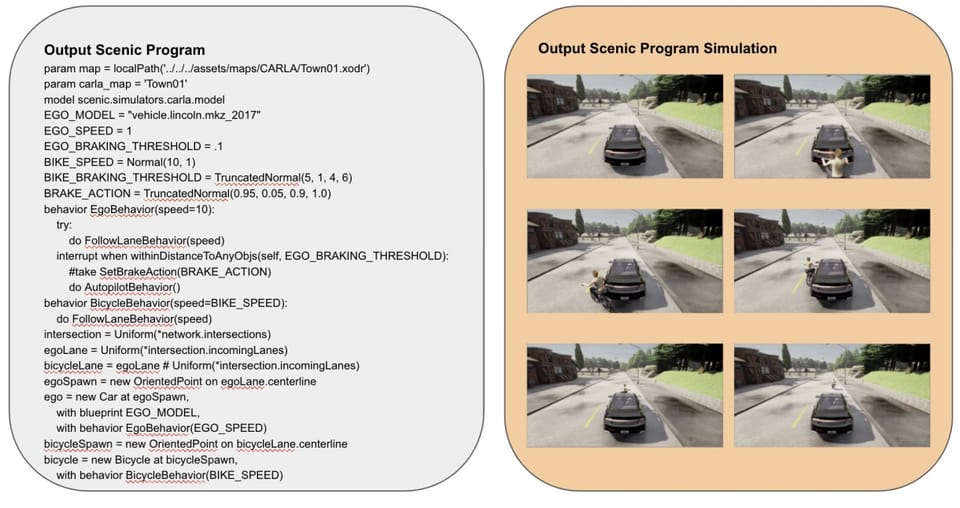AI-Powered Developer Tools Roundup - 2024-07-01 - part 2

ScenarioNL: Generating Probabilistic Scenario Programs from Natural Language
- An AI system that creates scenario programs from natural language, specifically police crash reports, for cyber-physical systems.
- It uses Scenic, a Probabilistic Programming Language, to represent uncertainty in incident details.
- The system combines multiple LLMs, various prompting strategies, a compiler, and a simulator to generate semantically meaningful and syntactically correct code.
- Evaluation was conducted using publicly available autonomous vehicle crash reports from California over the past five years.
Tools and artifacts in the paper:
Generating Probabilistic Scenario Programs from Natural Language
Automatic Programming: Challenges and Future
- LLM-based tools like GitHub Copilot have increased the popularity of automatic programming, but face deployment challenges due to concerns about code quality and trust.
- Advances in software engineering, such as program repair and analysis, can enable more effective automatic programming.
- Automated repair of LLM-generated programs can produce higher assurance code with evidence of reliability.
- The future programming environment may require programmers to adapt to new roles to fully utilize automatic programming capabilities.
Automatic Programming: Large Language Models and Beyond
CodeGRAG: Syntax Graph Retrieval for Code Generation
- A method to enhance LLMs' performance in single-round code generation tasks.
- It extracts and summarizes control and data flow of code blocks to bridge the gap between natural and programming languages.
- The approach improves code generation ability and supports cross-lingual generation, such as C++ for Python.
CodeGRAG: Extracting Composed Syntax Graphs for Retrieval Augmented Cross-Lingual Code Generation